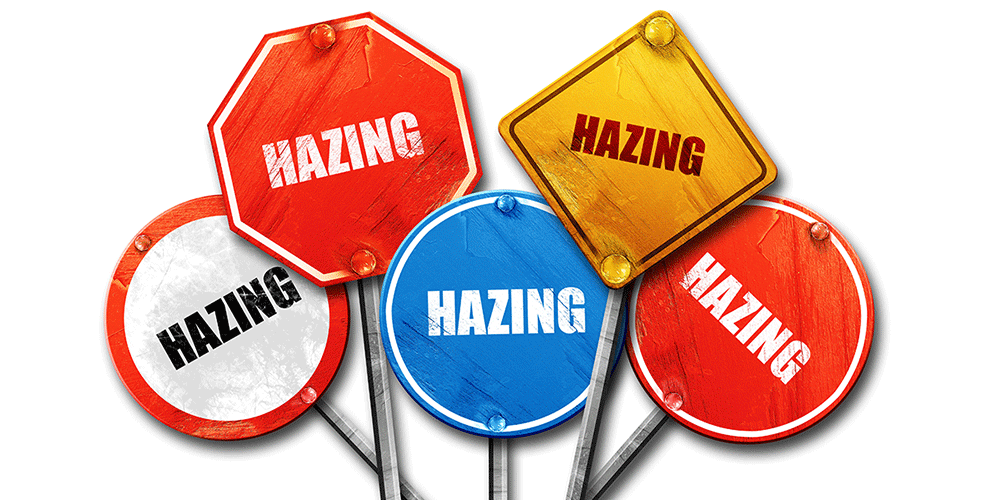The Stop Campus Hazing Act, the first-ever federal anti-hazing legislation, was signed into law late last year by President Joe Biden. Due to yearslong advocacy efforts by victims’ families demanding greater accountability and transparency from universities, the federal legislation amends the Clery Act to require higher education campuses to disclose hazing crime statistics in its Annual Security Report (ASR).
According to the National Study on Student Hazing, nearly 55% of college students involved in clubs, teams, and organizations report experiencing hazing. Experts say litigation surrounding hazing incidents is expected to rise as previously unreported incidents come to light.
RELATED: How to Prevent Hazing on College Campuses
Aaron Davis, Co-Managing Partner of Davis Goldman, PLLC and seasoned litigator with extensive experience handling high-profile personal injury and wrongful death cases, says the law is reshaping legal exposure for universities and will most likely set legal precedents in the coming years.
Campus Safety spoke with Davis about the legislation’s anticipated impact on hazing lawsuits and how colleges and universities should prepare for the upcoming changes.
Q: How common are college hazing lawsuits currently?
College hazing lawsuits are, unfortunately, still quite common across the country. While high-profile incidents make headlines, many more go unreported or are quietly settled. The most frequent type of hazing incident involves copious alcohol consumption under peer pressure or forced ingestion. These situations can quickly become life-threatening, leading to alcohol poisoning, impaired motor skills, and even death—especially when students are pressured into dangerous stunts like jumping into lakes, pools, or off rooftops while intoxicated.
RELATED: 5 Takeaways from the Liberty University Clery Audit
It’s important to note that today’s hazing is less about physical violence and more about drinking, often in environments with little to no adult supervision. The individuals leading these activities—who are drinking heavily themselves—are often the ones pushing that behavior onto new pledges. It creates a dangerous cycle, and trusting your life to people making those decisions is a recipe for disaster.
Q: What are some shortcomings you’ve seen college campuses make when it comes to addressing hazing lawsuits?
One of the biggest shortcomings is the hands-off approach many universities take when it comes to Greek life and hazing prevention. Schools often do just enough on the surface to protect themselves legally, but they stop short of taking a truly proactive or critical role. There’s this odd dynamic where universities tell fraternities and student organizations to “follow the rules,” but they don’t actively promote or enforce a culture that prioritizes safety and accountability.
Many institutions hesitate to get too involved in fraternity activities, likely to avoid liability, but that avoidance can have devastating consequences. Without consistent oversight and engagement, dangerous behaviors can go unchecked, and the responsibility gets passed around until it’s too late.
Q: How do you predict the Stop Campus Hazing Act will reshape legal exposure for universities?
The new legislation is clearly pushing universities toward greater accountability and transparency. By requiring schools to collect and report hazing statistics to the federal government, it increases the pressure on institutions to actively track what’s happening on their campuses. That said, there are some complexities. Not all universities may be keeping detailed records — or want to — and disclosing that kind of data opens the door to legal scrutiny.
There’s also a gray area in how hazing is defined. In some cases, incidents that may seem minor, such as yelling, can technically fall under the hazing umbrella, which could lead to overreporting. At the same time, with the volume of tragic cases and survivors coming forward, there’s a risk of the public becoming desensitized to the severity of severe or catastrophic hazing acts.
Still, the overarching effect of the legislation will likely be a shift toward increased institutional responsibility, which could heighten universities’ legal exposure if they fall short.
Q: What requirements within the Stop Campus Hazing Act do you potentially see campuses having a hard time navigating?
One of the biggest challenges is the requirement to report hazing statistics, especially when doing so could be seen as a threat to a university’s reputation or bottom line. At the end of the day, universities are businesses. Whether they’re state-funded or private, they’re often focused on protecting their brand and financial health. Publicly disclosing dangerous or damaging incidents like hazing might not align with those interests.
RELATED: Clery Compliance Efforts at Many Colleges Need More Financial Support from Top Leaders, Survey Finds
So while the legislation calls for more transparency, the question becomes: What’s the real incentive for universities to fully comply if it puts them at risk? If reporting could lead to lawsuits, bad press, or drops in enrollment, it’s understandable why some schools might hesitate. That’s where the tension lies—between legal obligation and the instinct to protect the institution.
Q: How do you recommend colleges prepare for the potential impact of the Stop Campus Hazing Act?
Preparation starts with prevention. Universities need to take a more active role in educating students about hazing before it happens, not just reacting once it does. That means having frank conversations during orientation about the fraternity and sorority system, what hazing actually looks like, what rush and initiation may involve, and most importantly, what the consequences are for participating in or allowing it.
Too often, students think, “That won’t happen to me,” until it does. Universities should clearly explain what disciplinary actions are taken when hazing occurs — whether it’s suspending or shutting down a fraternity — while also emphasizing how these incidents impact students’ lives long-term. Legal teams and student affairs departments all have a role to play in creating a culture where hazing isn’t tolerated and where students are empowered to recognize and report it early.
At the end of the day, punishing bad behavior after the fact isn’t enough. Proactive education and transparency are the most powerful tools colleges have to keep their campuses safe.







